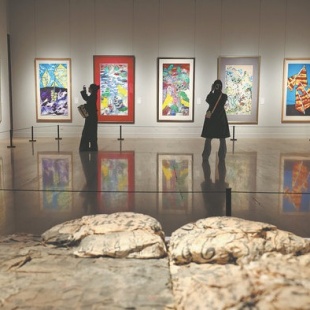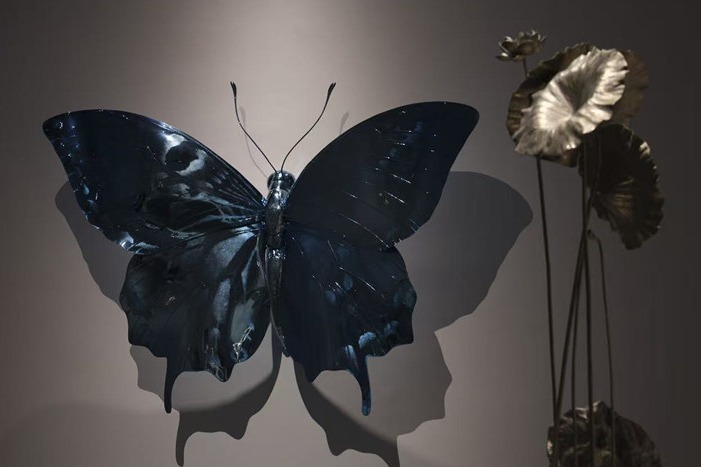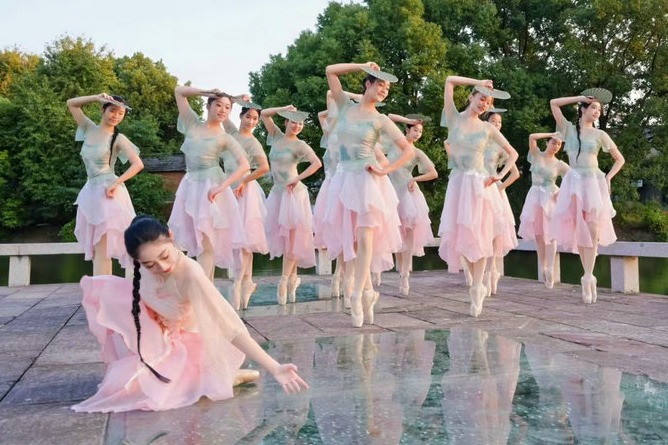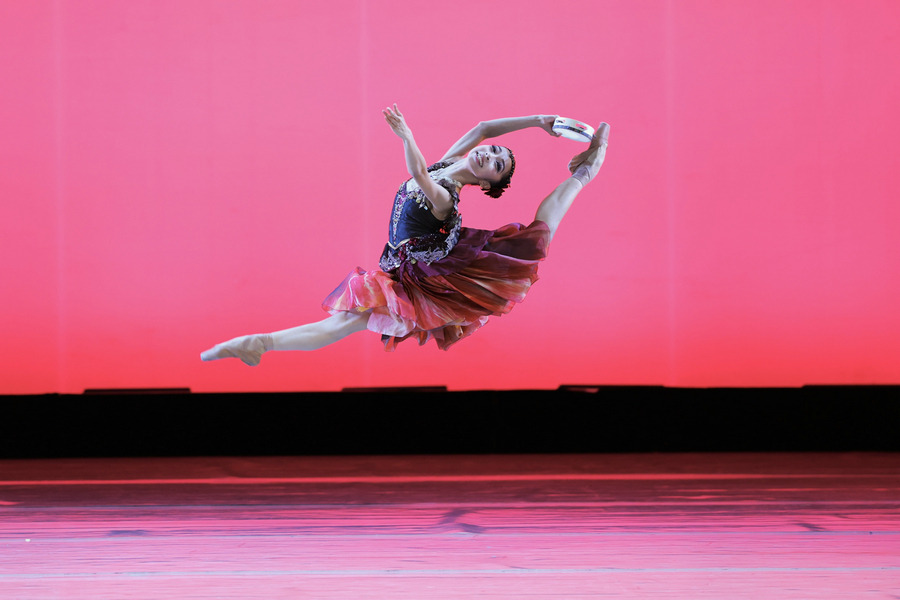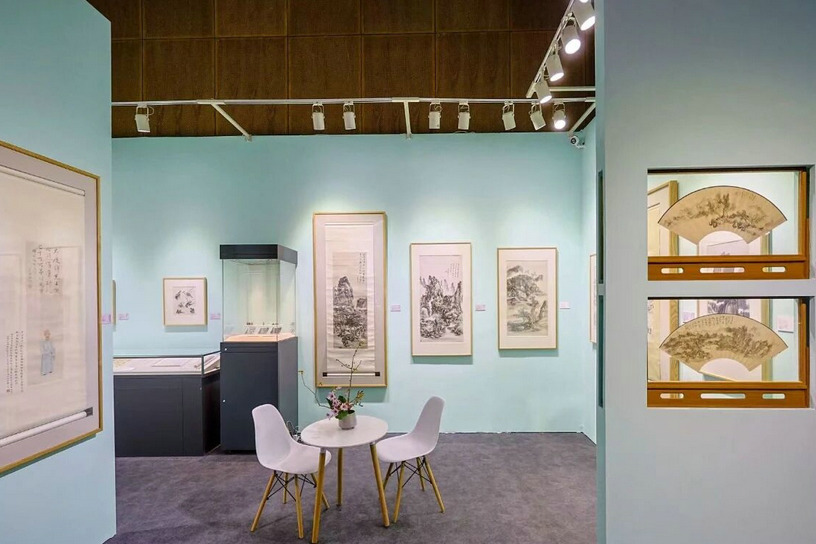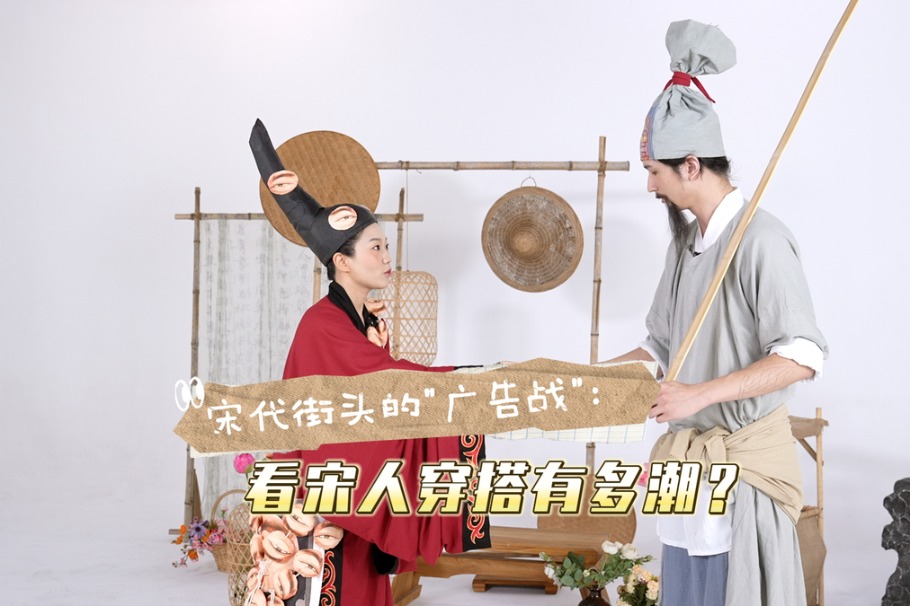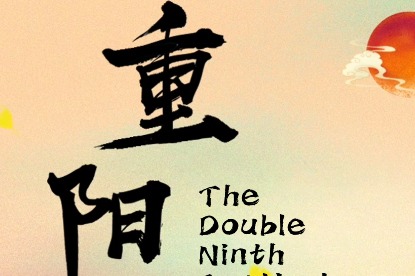Painting the year's hidden rhythms
Exhibition interprets the 24 solar terms with creased paper, vibrant pigments and abstract compositions, Lin Qi reports.

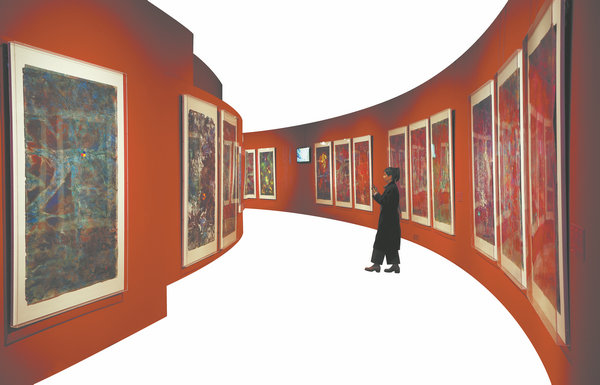
When Xu Dongdong's Beijing exhibition opened on Saturday, people in the city had already embraced the seasonal changes that mark the end of autumn: Two days earlier, shuang jiang (Frost's Descent), the last solar term of autumn, arrived to bring colder days, diminished sunlight, and trees in shades of red and yellow.
The ancient Chinese developed 24 solar terms to divide a year into different segments, in accordance with varied climates and phenological phenomena. Initially used to guide agriculture, the system remains relevant today, influencing daily routines such as clothing and diet, and serving as a reminder of nature's rhythms.
For example, Frost's Descent also signifies that wild animals begin hunting for winter, tree leaves fall, and insects retreat to their nests. These new phenological patterns are also depicted under Xu's painterly brushes, although in a more abstract, expressive manner. His paper is creased and folded, and vibrant colors orchestrate a symphony of autumn: red, green and orange evoke scenes of trees and mountains, while dots of yellow and blue suggest lakes and rivers.
Born in 1959, Xu has spent the past decade completing a painting series titled 72 Pentads of 24 Solar Terms, which captures the wisdom embedded in the 24 solar term system through a nonfigurative approach. The series is now at the center of his ongoing exhibition, titled Dialogue of Civilizations and Inquiries Into Life, at the National Art Museum of China running through to next Thursday.


